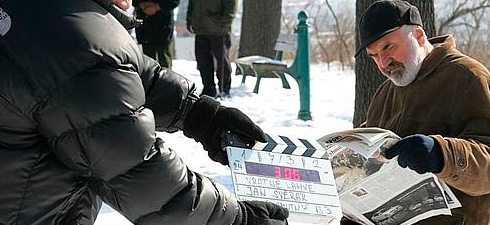When the Czech Republic took over the EU presidency at the beginning of the year, the country’s impressive cultural scene, past and present, was vaunted as a major asset – and rightly so. But in the eyes of Czech artists, the reality isn’t all that rosy. Not only did the arts go virtually unmentioned in the official speeches given by then-Prime Minister Mirek Topolanek’s cabinet members, but as several of the nation’s cultural luminaries pointed out, the Czech Republic ranks among the EU countries that spend the least on the arts. Its culture budget, less than 1% of GDP, is below the European average. The Czech Republic has no legislation in place concerning the arts, moreover, and unlike other countries such as France in particular, awards no tax breaks for donations by individuals or private-sector institutions.
Back in the days of Communism, the Czechoslovakian cultural model was the one in which artists had the best chances of surviving censorship. Milan Kundera, one of the most engaging and influential European writers of the past few decades, originally hails from Czechoslovakia. Even among those who stayed put, a number of writers and essayists attained renown, like Vaclav Havel, Ludvík Vaculík and Bohumil Hrabal. Much to Westerners’ surprise, though, Milan Kundera is not terribly popular in his native land; and the playwright (and ex-president) Vaclav Havel is not widely read – or performed – any more either.
Kundera and Havel are the two most famous Czech names abroad. But for many of their compatriots, the 20 years of freedom since 1989 have been dominated by the ongoing rivalry and hostility between the two men. Kundera has a reputation for arrogance and indifference to his country’s fate after emigrating to the West. Havel, in contrast, has succeeded in cultivating the image of a self-sacrificing patriot. This image suffices for his compatriots, so much so that precious few actually read Havel nowadays – and those who do aren’t spring chickens any more. Still and all, the rivalry between Kundera and Havel remains a sort of pivot around which Czech cultural life (r)evolves. During his 13-year term of office, President Havel systematically avoided paying the slightest official attention to Kundera.
In 1991, after the Velvet Revolution, Czech cinema soon got rolling again, although in the first few years one couldn’t help noticing a certain impoverishment of its subject-matter and artistic forms. It seemed as if the departing censors had taken all the artistic inspiration away with them. Without the allegorical template and constraints of censorship, many artists found themselves stripped of their principal means of expression.
What’s more, they had to grapple with the constraints of the market. Nowadays an artist has to sell what he creates. But after the first, hesitant years, the new generation of directors eventually succeeded in working the Czech film back into the international circuit: witness Kolya, for instance, by Jan Sverák, which won the Academy Award for Best Foreign Film in 1996. But in film as in literature, the generation gap is almost palpable. Once they had regained their freedom, the older generation weren’t expecting their younger successors to be so critical of society, especially current-day society. Instead of denouncing the former Communist regime, today’s young creators target latter-day Czech conformism. About 15 to 20 films a year are produced in the Czech Republic, which, for a population of only 10 million, is considered a satisfactory output. Most Czech pictures are low-budget, averaging half a million euros apiece.
Was this article useful? If so we are delighted!
It is freely available because we believe that the right to free and independent information is essential for democracy. But this right is not guaranteed forever, and independence comes at a cost. We need your support in order to continue publishing independent, multilingual news for all Europeans.
Discover our subscription offers and their exclusive benefits and become a member of our community now!












